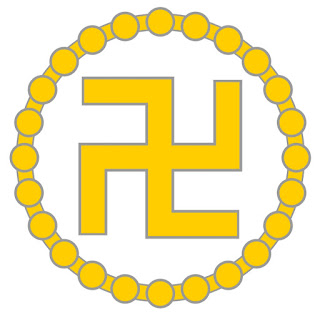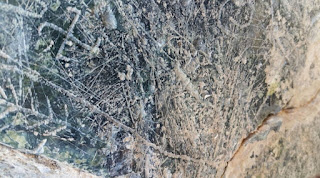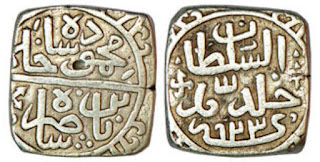The Swastika symbol, is an ancient religious icon in the cultures of Eurasia. In various styles, it is found in numerous cultures. It is used as a symbol of divinity and spirituality in Indian religions, including Hinduism, Buddhism and Jainism. The symbol is also used as a symbol of good luck and prosperity in India, Nepal, Mongolia, Sri Lanka, China and Japan.
The word ''swastika'' comes from Sanskrit, meaning ''conducive to well - being''. From ''su'' meaning ''well'', and ''asti'' meaning ''to be''. With the suffix ''ka'', it becomes ''thing associated with well-being or an auspicious thing.The word was first recorded by the ancient linguist Panini in his work Ashtadhyayi. Panini lived in or before 4th century BC, possibly in 6th or 5th century BC.
17th century Birch bark manuscript of Panini's grammar treatise from Kashmi
The word ''swasti'' occurs frequently in the Vedas. A majority of scholars consider it a solar symbol. The right facing symbol symbolizes surya (sun), while the left facing symbol is called ''sauwastika'', symbolizes night or tantric aspects of Kali.
Jain symbol (Prateek) containing a swastika
In several major Indo-European religions, the swastika symbolizes lightning bolts, representing the thunder god and the king of the gods, such as Indra in Vedic Hinduism, Zeus in the ancient Greek religion, Jupiter in the ancient Roman religion and Thor in the ancient Germanic religion.
The swastika is an icon widely found in both human history and the modern world. In various forms, it is known (in various European languages) as fylot, gammadion, tetraskelion or cross cramponnee (a term in Anglo-Norman heraldry). In German it is Hakenkreuz, in French, croix gammee, in Italian, croce uncinata. In Mongolian it is called Xac (Khas) and used in seals.
In Chinese, it is called wanzi, meaning ''all things symbol'' pronounced manji, in Japanese, manja in Korean and van tu/chu van in Vietnamese. The symbol is found in the archeological remains of the Indus Valley Civilization and Samara, as well as in early Byzantine and Christian artwork.
In the Western world, it was a symbol of auspiciousness until the 1930s when the right-facing tilted form became a feature of Nazi symbolism. As a result of World War II and the Holocaust, many people in the West still strongly associate it with Nazism.
It is a symbol of life, of the vivifying role of the supreme principal of the universe, the absolute God, in relation to the cosmic order. It represents the Hellenic Logos, the Hindu Om, the Chinese Taiyi in the formation of the world. According to the scholar Reza, the Swastika represents the north ecliptic north pole. The symbol was later attested as the four-horse chariot of Mithra in ancient Iranian culture. They believed the cosmos was pulled by four heavenly horses who revolved around a fixed center in a clockwise direction. This notion later flourished in Roman Mithraism as a symbol in their iconography. According to Russian archaeologist Gennady Zdanovich, in Sintashta culture, the swastika symbolized the universe, representing the spinning constellations of the celestial north pole centered in the Ursae Minoris.
The Han dynasty Book of Silk (2nd century BC) depicts a rotating comet with a four-pronged tail as early as 2000 years BC.
The earliest known swastika is from 10,000 BC, part of an intricate meander pattern of joined-up ''swastikas'' found on a late paleolithic figurine of a bird, carved from mammoth ivory, found in Mezine, Ukraine.
In the mountains of Iran, swastikas inscribed on stone walls are estimated to be more than 7,000 years old.
Pre-historic stone in Iran
It is believed that Swastika moved westwards from India to Finland, Scandinavia, the Scottish Highlands and other parts of Europe. In England, Neolithic or Bronze Age stone carvings of the symbol have been found on Ilkley Moor, in West Yorkshire, England such as the Swastika Stone.
Photograph of the original swastika stone
Other Iron Age attestations of the swastika are associated with Indo-European cultures such as the Illyrians, Indo- Iranians, Celts, Greeks, Germanic people and Slavs. In Egypt it has been seen during the Coptic period.
The symbol has been found in the Gegham mountains in Armenia.
The petroglyph with swastikas, Gegham mountains, ArmeniaIn the Indus Valley Civilization, in 3000 BC, the swastika symbol appears very often.
The swastika shape appears on various Germanic Migration Period and Viking Age artifacts, such as the 3rd century AD, Vaelose Fibula from Zealand, Denmark
In the Zoroastrian religion of Persia, the swastika was a symbol of the revolving sun, infinity, or continuing creation. It is the most common symbol on Mesopotamian coins.
East Asia. The paired swastika symbols are included, at least since the Liao Dynasty (907-1125AD), as part of the Chinese writing system and are variant characters in Korean, Cantonese and Japanese.
Mongolian Shamanism ''Khas'' symbol
Goa Lawah Hindu temple entrance in Bali, Indonesia
Coins with Swastika
Germany, Third Reich, 2 Reichsmark, 1939, silver, weight 8.0 g
Syriam, AR 80 ratti, weight 9.1 g
Taxila, 2nd century BC, weight 7 g



































Great information. Superbly researched. Kudos
ReplyDeleteWell researched blog with impressive details of a symbol we are so familiar with.
ReplyDeleteA very thorough research and a fascinating insight into the relevance of the Swastik symbol across various cultures and its depiction on coinage
ReplyDelete